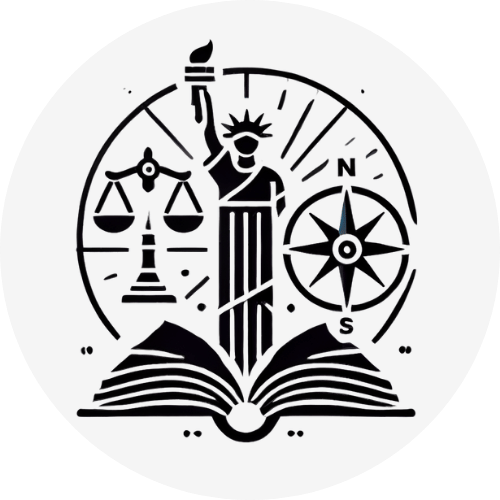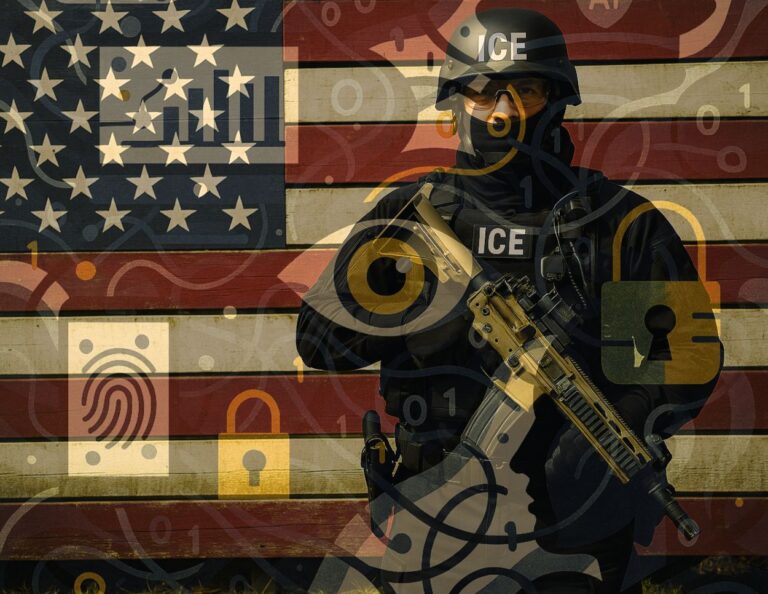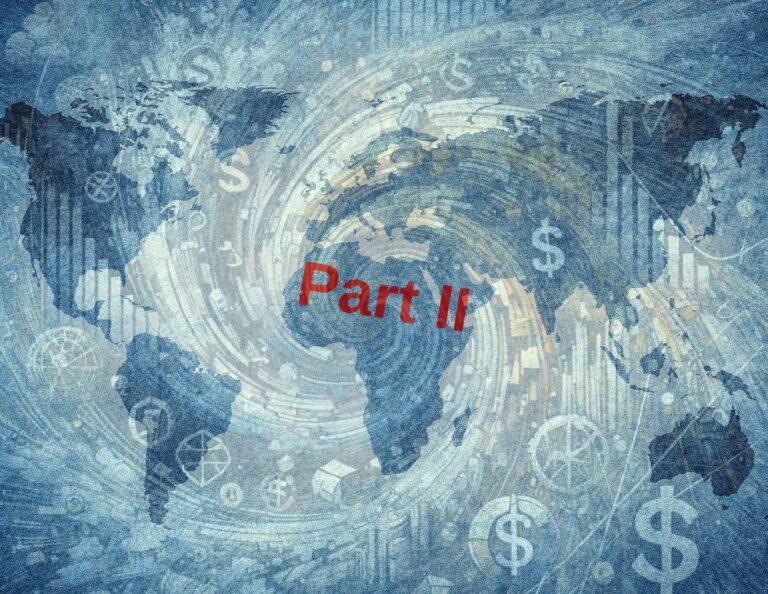The Dismantling of American Democracy
Sabotage and Disenfranchisement
tl;dr: The Trump administration has launched a methodical campaign to unravel the guardrails of American democracy. Instead of pausing or canceling elections, it’s targeting the systems that make them legitimate—defunding cybersecurity infrastructure, disbanding foreign interference task forces, and removing the very officials tasked with protecting election integrity.
In parallel, new laws and executive orders have been crafted to restrict who can vote and whose votes count. Voter roll purges have accelerated. Documentation requirements disproportionately impact naturalized citizens, women, and low-income Americans. Valid mail-in ballots are more easily disqualified. These changes don’t solve fraud—they sideline eligible voters with surgical precision.
What emerges isn’t a collection of disconnected policies, but a blueprint: weaken the system, constrain participation, then cast doubt on the outcome. The result is a political environment primed to reject accountability—and a democratic process designed to fail on cue.
What’s Actually Happening to American Democracy
The Trump administration has launched a coordinated campaign against the foundations of American democracy—not by suspending elections, but by removing the protections that make them legitimate and reshaping the rules to exclude opposition.
For more than two centuries, the arc of American democracy has moved—unevenly but unmistakably—toward expansion. Property restrictions fell. The 15th, 19th, and 26th Amendments secured the vote for Black Americans, for women, for young people. The Voting Rights Act banned discriminatory barriers. In recent decades, reforms like early voting, vote-by-mail, and same-day registration made participation easier, not harder.
Each of those steps carried a shared understanding: democracy is strongest when more people have access to it.
That arc has broken. In 2025, we are not witnessing a pause. We are witnessing a reversal.
A federal campaign is now underway to suppress voter participation, strip away protections against foreign interference, and inject tools into the system that make it easier to question results—before, during, and after votes are cast. This isn’t a plan to improve democracy. It’s a strategy to narrow it, control it, and recode its outcomes through law, logistics, and narrative manipulation.
And let’s be clear: of course we want elections to be secure. Of course voter fraud should be prevented. Every eligible voter should have confidence that their vote will count—and that only eligible voters are counted.
That confidence already rests on a foundation of real safeguards. Audits. Paper ballot trails. Bipartisan oversight. State certification protocols. These systems work. They can be improved. They can be modernized. But they do not need to be burned down and rebuilt under the command of those seeking unchecked power.
Because fraud is not the problem.
In 2020, out of more than 159 million ballots cast, just 475 possible cases of voter fraud were referred for investigation. Most were paperwork errors or misunderstandings. In 2022, fewer than 100 charges were filed nationwide. In 2024, no widespread fraud has been found or certified by any state—Republican or Democrat.
The problem isn’t fraud. The problem is what’s being built in the name of fighting it.
What follows is not a random collection of policy shifts. It’s a structure:
- It begins with the sabotage of election security.
- It moves through legal barriers designed to block participation.
- It scales with federalized voter purges.
- And, it closes the loop with a narrative machine ready to call any inconvenient outcome a lie.
These aren’t unconnected efforts. They are levers of consolidation—tools for breaking the relationship between the people and the power that is supposed to answer to them.
This is what’s actually happening to American democracy.
The Sabotage of Election Security Infrastructure
The Trump administration has not merely neglected election security—it has actively dismantled the very systems designed to protect it. What once stood as a multi-agency, bipartisan effort to secure America’s elections from cyberattacks, foreign interference, and disinformation campaigns has been strategically gutted. The result is a system increasingly vulnerable to disruption, confusion, and manipulation from both inside and outside the country.
Cutting Off Cybersecurity Support
One of the most significant blows came in March 2025, when the administration abruptly cut federal funding for two of the country’s most critical cybersecurity resources: the Elections Infrastructure Information Sharing and Analysis Center (EI-ISAC) and the Multi-State Information Sharing and Analysis Center (MS-ISAC). These programs served as national hubs for real-time intelligence sharing, threat detection, and rapid-response coordination between federal agencies and state-level election officials.
With that funding eliminated, local jurisdictions have been left to fend for themselves—without the capacity, expertise, or tools to manage complex cyber threats. Many election offices, especially in smaller or rural counties, are now operating without access to the very warning systems that were built to keep them safe.
The Quiet Purge of Election Defenders
At the Department of Homeland Security, specialists at the Cybersecurity and Infrastructure Security Agency (CISA) who were focused on disinformation and foreign influence have been sidelined or placed on administrative leave. These were the officials responsible for countering the kind of viral falsehoods and targeted propaganda campaigns that eroded public confidence in 2020 and 2022.
Rather than being bolstered ahead of the next election cycle, this team was dismantled. With their removal, the federal government has stepped back from its role in protecting the information environment that shapes voter perception and participation.
Dismantling Intelligence Coordination
In parallel, the Department of Justice shut down the FBI’s Foreign Influence Task Force—the primary interagency team focused on tracking and neutralizing efforts by hostile governments to interfere in U.S. elections. This task force was central to uncovering and responding to tactics like Russian bot farms, Iranian disinformation networks, and coordinated phishing campaigns targeting election systems.
With that unit gone, the United States no longer has a centralized mechanism for identifying and responding to foreign election interference. That absence is not a bureaucratic oversight—it’s a vulnerability created by design.
The Removal of Cyber Command’s Top Official
In April 2025, President Trump dismissed General Timothy D. Haugh, the official in charge of both the National Security Agency and U.S. Cyber Command. Haugh had been the highest-ranking officer responsible for defending the country against digital threats, including those aimed at its electoral systems.
His removal, reportedly encouraged by fringe political influencers, left a leadership vacuum at the very top of the nation’s cyber defense architecture. No immediate replacement was named. No strategic rationale was offered. At a moment of escalating digital threats, the person tasked with defending the electoral backbone of American democracy was forced out.
Together, these actions do not reflect carelessness or routine turnover. They point to a deliberate decision to remove the guardrails that were put in place after years of bipartisan investment in election security. As the technical infrastructure grows more vulnerable and institutional protections are stripped away, the door opens wider—for interference, for misinformation, and for political actors to declare the system too broken to trust. Which may be the point.
Disenfranchisement by Design
While the Trump administration has weakened the systems that protect American elections from interference and fraud, it has simultaneously imposed new restrictions on voter access under the banner of “election integrity.” These measures do not secure the vote. They selectively suppress it—targeting the very populations most likely to oppose the regime’s grip on power. Disenfranchisement isn’t a byproduct. It’s an objective.
The SAVE Act
Passed by the House in April 2025 and now under Senate review, the Safeguard American Voter Eligibility (SAVE) Act mandates documentary proof of U.S. citizenship to register to vote in federal elections. On the surface, it appears narrowly focused. In practice, it casts a wide and deeply exclusionary net.
The law targets problems that don’t exist. Instances of noncitizen voting in the U.S. are vanishingly rare—accounting for far less than 0.01% of votes cast in recent elections. What the law does accomplish is the creation of steep new obstacles for millions of eligible Americans, particularly:
- Naturalized citizens who may not have easy access to original documentation
- Women who have changed their names through marriage or divorce
- Low-income voters who can’t afford the time, money, or bureaucratic complexity of obtaining updated government records
- Rural, urban, and suburban residents alike who rely on mail-in or third-party registration efforts
The burden is on the voter, and the system is designed to catch them unprepared. As with past voter ID laws, the barriers fall hardest on groups that already face challenges in being heard.
Trump’s Executive Order on Voting
Issued in March 2025, the executive order titled “Preserving and Protecting the Integrity of American Elections” replicates and expands on the SAVE Act. It directs federal agencies to assist states in verifying the citizenship status of registered voters by granting them access to federal immigration and Social Security databases. It also imposes a hard deadline: only ballots received by the close of Election Day may be counted in federal races, regardless of postmark or state law.
This order does not improve transparency or prevent fraud. What it does is enable states to conduct mass “cleanups” of their voter rolls using incomplete or mismatched data—especially from databases not designed for real-time verification. These audits disproportionately flag naturalized citizens, communities of color, and voters with non-Anglicized names or hyphenated identities.
Meanwhile, the mail-in deadline rule threatens to throw out tens of thousands of valid ballots, particularly from voters in remote areas or those relying on underfunded postal services. The rule doesn’t ensure accuracy. It accelerates rejection.
Suppression Framed as Security
Supporters of the SAVE Act and executive order claim they are defending democracy. But these restrictions were passed as the administration dismantled the very infrastructure that actually protects elections—from foreign interference, cyberattacks, and disinformation. The contrast isn’t coincidental.
The right to vote is being narrowed through legal channels that appear technical but function as filters—designed to make voting harder, slower, and more uncertain for certain Americans. These are not blanket attacks on the electorate. They are precisely aimed tools of exclusion, calibrated to reinforce political dominance under the cover of law.
Voter Roll Purges: Local Tactic, New Federal Power
For the last few years, voter purges have been used at the state level to quietly remove eligible voters from the rolls. These purges have often flown under the radar—labeled as “routine maintenance” or justified by claims of fraud that rarely materialize. What’s happening in 2025 is something more coordinated, more expansive, and far more dangerous: the federalization of a state-level suppression tool, scaled to reach deeper and strike harder than ever before.
A Surge in Removals
Between 2020 and 2022, over 19 million names were purged from voter registration rolls across the country—a 21% increase from the previous election cycle. While some removals are legitimate, such as deceased voters or those who moved, many are the result of outdated data, inactivity flags, or database mismatches. These purges are rarely transparent. Voters often have no idea they’ve been removed until they show up to vote and are turned away.
States like Georgia, Ohio, and Wisconsin have used these methods to significant effect. In some cases, tens of thousands of voters were wrongly removed in the months or weeks leading up to major elections. There’s little accountability, and even less recourse.
Federal Databases Weaponized
What’s new in 2025 is the integration of these tactics into federal directives. Under President Trump’s executive order, states are now being granted access to federal immigration and Social Security databases to verify voter citizenship status. These databases were never designed for real-time or election-specific use. They contain outdated, incomplete, and mismatched records—making them a perfect tool for sweeping purges disguised as verification.
By using flawed federal data to question voter eligibility, states can now initiate mass removals of naturalized citizens, people with non-Anglicized names, or those whose documentation doesn’t exactly match across agencies. A missing hyphen, a maiden name, or a processing delay could now mean losing the right to vote.
This is not a more accurate system. It’s a more efficient one—for disenfranchisement.
The RNC’s National Data Push
At the same time, the Republican National Committee has formally requested voter roll data from 48 states, aiming to cross-check registration records and flag potential “inconsistencies.” This move follows years of litigation and controversy over similar efforts, such as Kris Kobach’s infamous “Crosscheck” program, which falsely identified thousands of legitimate voters as duplicates.
The scale of the RNC’s current effort is far larger. With support from the executive order and access to federal systems, it raises the possibility of a centralized, partisan attempt to invalidate wide swaths of the electorate—under the pretext of cleaning up the rolls.
Disproportionate Harm to Marginalized Voters
As with every phase of this playbook, the impact is not evenly distributed. Purges disproportionately affect:
- Naturalized citizens, especially from Latin America, Asia, and Africa
- Voters of color, whose names and documentation often diverge from bureaucratic defaults
- Students, renters, and lower-income Americans, who move more frequently and face more address mismatches
- Voters in high-density urban areas, where roll challenges are harder to contest in time
These are the very people most likely to be underrepresented, and the most likely to have their ballots challenged, delayed, or denied.
Importantly – the now de-registered voters are not informed of their changed status in time to correct it.
Voter purges have long been a backdoor tactic for shrinking the electorate. Now, they’ve been given a federal key. With incomplete data, partisan momentum, and no oversight, the risk is no longer theoretical. Millions of voters are one mismatch away from being silently erased from the system that claims to represent them.
The Feedback Loop: Crisis by Design
The sabotage of election security and the disenfranchisement of voters aren’t just independent threats. Together, they form a self-reinforcing loop—one that creates chaos by design and then uses that chaos to justify deeper political control. What looks like dysfunction is actually infrastructure: a system built to break trust in the vote, then capitalize on the collapse.
Voter Restrictions Create Chaos
The new barriers imposed by the SAVE Act, the executive order, and state-level purges do not make elections more secure—they make them harder to navigate. Confusion becomes a feature, not a flaw. Voters are unsure whether they’re registered, what ID they need, or whether their mail-in ballot will count. Some arrive at the polls to find they’ve been removed from the rolls. Others receive misinformation online and give up before trying.
The result is a degraded voting experience that disproportionately affects marginalized communities. But it also sets the stage for the next move in the strategy.
Systemic Weaknesses Invite Real Threats
While voters face new obstacles, the institutions responsible for securing elections have been hollowed out. CISA is operating with reduced capacity. The FBI’s foreign interference unit has been disbanded. The nation’s top cyber defense official has been fired. States no longer have access to federal cybersecurity support.
With these protections gone, the system is far more vulnerable to real disruption—whether from hacking attempts, foreign propaganda, or internal technical failures. And when those failures happen, there’s no coordinated mechanism left to respond effectively.
Fallout Becomes a Weapon
This is where the loop closes. The administration manufactures an environment where confusion, delays, and irregularities are likely. Then, when those conditions play out in real time, they’re used as proof that the system can’t be trusted.
It’s not hard to imagine the headlines: duplicate registrations, mismatched addresses, ballots delayed in the mail. These issues—made worse by the very policies now in place—become the basis for casting doubt on the outcome itself.
The consequences are no longer speculative. In 2020, false claims of voter fraud fueled a violent attack on the U.S. Capitol. In 2025, the mechanisms to prevent or investigate such claims have been dismantled. What remains is a system primed for exploitation.
With enough confusion, enough lawsuits, and enough doubt, those in power don’t need to win outright. They only need a reason to reject the result. And now, they’ve built one.
Disenfranchisement and Sabotage Are the Strategy
This is not a system losing control. It’s a system being refitted for a different kind of control.
What’s unfolding in real time is a targeted dismantling of the machinery that makes elections free, fair, and functional. The institutions built to protect the vote are being stripped of resources, leadership, and legitimacy. The laws guiding participation are being rewritten to restrict access. The narrative being seeded—loudly and often—is that if the result isn’t favorable, it isn’t real.
None of it is accidental. It’s a coordinated strategy to shrink the electorate, break the systems that guard it, and flood the resulting vacuum with manufactured doubt.
Democracy still exists in name. But the structure beneath it is being altered—quietly, efficiently, and with a clear objective: to make electoral power contingent not on public will, but on political design.
We are witnessing the invalidation of democracy in the US.
Sources Include
- https://www.votebeat.org/2025/03/13/center-internet-security-memo-election-funding-cut/
https://www.kjzz.org/the-show/2025-03-13/trump-administration-cuts-a-longstanding-election-security-program - https://www.reuters.com/world/us/us-homeland-security-says-election-security-personnel-placed-leave-2025-02-12/
- https://en.wikipedia.org/wiki/Cybersecurity_and_Infrastructure_Security_Agency
- https://apnews.com/article/trump-election-security-fbi-cisa-foreign-interference-98f1e17c8a6d5923db945a27f06458e7
- https://www.washingtonpost.com/national-security/2025/04/03/nsa-director-fired-tim-haugh/
- https://apnews.com/article/trump-national-security-agency-tim-haugh-ec08b455e2c1112f5c6bb1881fad73e2
- https://www.congress.gov/bill/119th-congress/house-bill/22/text
- https://www.pbs.org/newshour/politics/house-passes-republican-bill-requiring-voters-provide-proof-of-u-s-citizenship
- https://www.theguardian.com/us-news/2025/apr/10/safeguard-american-voter-act-house-bill
- https://www.brennancenter.org/our-work/research-reports/citizenship-voting-requirements-threaten-american-democracy
- https://www.glamour.com/story/save-act-could-stop-millions-women-voting
- https://www.msnbc.com/the-reidout/reidout-blog/save-act-voting-citizenship-documentation-rcna144054
- https://www.whitehouse.gov/presidential-actions/2025/03/preserving-and-protecting-the-integrity-of-american-elections/
- https://www.reuters.com/world/us/democratic-led-states-sue-over-trumps-order-overhauling-elections-2025-04-03/
- https://www.politico.com/news/2025/03/31/democrats-trump-proposed-sweeping-overhaul-us-elections-00262789
- https://www.theguardian.com/us-news/2025/mar/25/trump-executive-order-voter-registration-immigration
- https://www.brennancenter.org/our-work/analysis-opinion/dangerous-new-trump-voting-order-what-you-need-know
- https://campaignlegal.org/update/what-you-need-know-about-save-act
- https://www.brennancenter.org/our-work/research-reports/noncitizen-voting-myth
- https://www.nbcnews.com/politics/elections/mail-voting-delays-2020-election-rcna25432
- https://www.aclu.org/news/voting-rights/why-vote-by-mail-ballots-get-rejected
- https://www.brennancenter.org/our-work/research-reports/voter-purges-2022
- https://www.npr.org/2022/08/26/1119588894/voter-roll-purges-georgia-florida-wisconsin
- https://www.brennancenter.org/our-work/analysis-opinion/risks-voter-roll-purges-based-bad-data
- https://www.nbcnews.com/politics/elections/naturalized-citizens-voting-roll-purges-rcna41194
- https://apnews.com/article/d483ed9a67a7816a3c77231f7ccf885d
- https://www.aclu.org/issues/voting-rights/fighting-voter-suppression/kansas-crosscheck-voter-suppression-program
- https://www.motherjones.com/politics/2018/06/why-voter-purges-are-more-dangerous-than-ever
- https://www.lgbtmap.org/democracy-maps/voter_roll_purges
- https://www.brennancenter.org/our-work/research-reports/voting-laws-roundup-2024
- https://www.aclu.org/news/voting-rights/confusion-and-chaos-is-the-point
- https://www.nytimes.com/2020/10/27/us/politics/voter-purges-confusion.html
- https://www.nbcnews.com/news/us-news/russia-iran-china-2020-election-interference-intelligence-rcna475
- https://www.propublica.org/article/2020-election-chaos-disinformation-fraud-claims
- https://www.justsecurity.org/84506/the-road-to-the-january-6-insurrection
- https://www.politico.com/news/2020/11/10/trump-legal-strategy-election-435528
- https://www.washingtonpost.com/politics/2023/06/13/trump-election-lies-legal-weaponization







